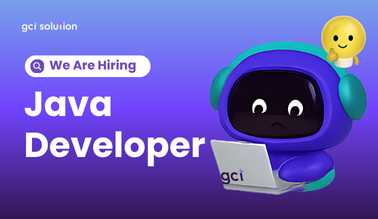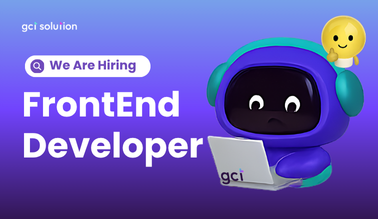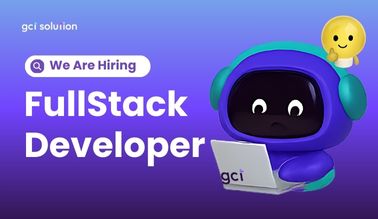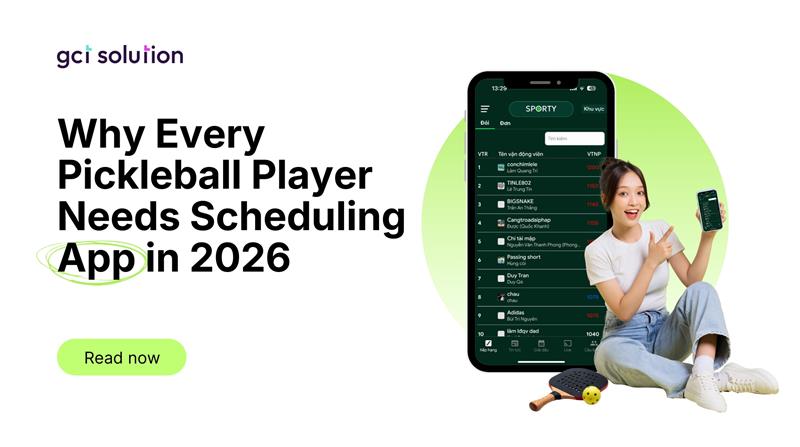dApps Development: A Comprehensive Guide
The popularity and adoption of dApps are growing at an unprecedented pace. As of 2023, the total value locked (TVL) in decentralized finance (DeFi) platforms, a key sector of dApps, surpassed $100 billion, highlighting the immense potential and trust in this innovative technology. This comprehensive guide by GCT Solution explores the world of dApps, analyzing their characteristics, advantages, use cases, development processes, and best practices to help you navigate and succeed in this burgeoning field.
What Are dApps?
Decentralized applications, or dApps, are a new breed of applications that run on a blockchain network rather than on centralized servers. Unlike traditional applications, dApps are open-source, decentralized, and leverage blockchain technology to provide enhanced security and transparency. The core idea behind dApps is to remove the need for a central authority, thereby enabling peer-to-peer transactions and interactions.
Key Characteristics of dApps
- Open-Source: The source code of dApps is publicly available, allowing anyone to inspect, modify, and contribute to the codebase.
- Decentralized: dApps operate on a decentralized blockchain network, ensuring that no single entity controls the application.
- Blockchain-Based: Transactions and operations within dApps are recorded on a blockchain, providing an immutable and transparent ledger.
- Smart Contracts: dApps utilize smart contracts, which are self-executing contracts with the terms of the agreement directly written into code. These contracts automate and enforce transactions.
- Tokenized: Many dApps have their own native tokens, which are used for governance, transactions, and incentivizing users.
Advantages of dApps
Given these characteristics, dApps offer several key advantages:
- Transparency: Since dApps run on a public blockchain, all transactions are transparent and can be verified by anyone. This fosters trust among users.
- Security: The decentralized nature of dApps makes them less vulnerable to hacks and data breaches compared to centralized applications.
- Resistance to Censorship: dApps are immune to censorship because there is no central authority that can alter or shut down the application.
- Interoperability: dApps can interact with other dApps and blockchain networks, creating a more integrated ecosystem.
Use Cases of dApps
dApps are being implemented across various industries, demonstrating their versatility and potential:
- Finance (DeFi): GCT Solution developed a thrilling DeFi game platform, enhancing blockchain gaming with DeFi features. A team of four created this comprehensive solution in one year, including consensus mechanisms, blockchain nodes, and APIs.
- Gaming: dApps such as Axie Infinity and Decentraland offer blockchain-based gaming experiences where players can own, trade, and monetize in-game assets. Axie Infinity, for example, reported over $1.3 billion in transactions in 2021.
- Supply Chain: dApps like VeChain provide transparency and traceability in supply chains by recording every transaction on the blockchain. This helps in verifying the authenticity of products and improving efficiency.
- Social Media: Platforms like Steemit and Mastodon are decentralized social media networks that reward content creators with tokens. These dApps aim to provide fairer and censorship-resistant alternatives to traditional social media.

How to Develop dApps?
Developing a dApps involves several crucial steps:
Conceptualization
The first step in developing a dApps is to identify a problem that needs solving and plan the dApps’s functionality. This involves understanding the target audience, defining the use case, and outlining the core features of the dApps.
Smart Contracts
Smart contracts are the backbone of dApps. They are written in blockchain programming languages like Solidity (for Ethereum). Smart contracts automate processes and execute transactions based on predefined rules.
Example of a simple Solidity contract:
|
pragma solidity ^0.8.0; contract SimpleStorage { uint256 storedData;
function set(uint256 x) public { storedData = x; }
function get() public view returns (uint256) { return storedData; } } |
You may also like this article:
A Complete Explanation about Smart Legal Contracts
Frontend Development
The frontend of a dApps is built using web technologies like HTML, CSS, and JavaScript, and frameworks such as React or Angular. This part of the development focuses on creating a user-friendly interface that interacts with the blockchain.
Integration
The frontend needs to communicate with the smart contracts. This is done using libraries like Web3.js or Ethers.js, which provide APIs to interact with the Ethereum blockchain.
Example of integrating Web3.js:
|
const Web3 = require(‘web3’); const web3 = new Web3(‘https://mainnet.infura.io/v3/YOUR_INFURA_PROJECT_ID’); const contractABI = […]; // Contract ABI const contractAddress = ‘0x…’; // Contract address
const contract = new web3.eth.Contract(contractABI, contractAddress); |
Testing
Testing is crucial to ensure the functionality and security of the dApps. This involves testing the smart contracts and the overall application for bugs and vulnerabilities. Tools like Truffle and Hardhat are popular for testing Ethereum smart contracts.
Deployment
Once the dApps is thoroughly tested, it is deployed to the blockchain. This involves deploying the smart contracts and making the dApps live for users. Deployment tools like Remix IDE and Truffle can be used for this purpose.
Tools and Technologies
Selecting the right tools and platforms is essential for successful dApps development:
Blockchain Platforms
When developing dApps, it’s essential to choose the right blockchain platform. Here are some popular options:
- Ethereum: The most widely used platform for dApps development. Ethereum’s extensive ecosystem, robust developer tools, and large community support make it a preferred choice. As of 2023, Ethereum hosts over 3,000 dApps.
- Binance Smart Chain (BSC): Known for its low transaction fees and high throughput, BSC is gaining traction among dApps developers. It is compatible with the Ethereum Virtual Machine (EVM), making it easy to port Ethereum dApps to BSC.
- Polkadot: Polkadot enables interoperability between different blockchains, allowing dApps to operate across multiple chains seamlessly. It uses a unique sharding model to enhance scalability.
- Solana: Famous for its high performance and low fees, Solana is an emerging platform for dApps development, particularly in the DeFi and NFT spaces.
- Polygon: A layer 2 solution for Ethereum, Polygon (formerly Matic) offers scalability and faster transactions while retaining Ethereum’s security and decentralization.
Development Tools
- Truffle Suite: A comprehensive suite for Ethereum development, providing tools for smart contract compiling, testing, and deployment. Truffle also includes Ganache, a personal blockchain for testing.
- Hardhat: A development environment for Ethereum that facilitates compiling, deploying, testing, and debugging dApps. Hardhat’s flexibility and plugin ecosystem make it a popular choice.
- Remix IDE: An online integrated development environment for writing, testing, and deploying Solidity smart contracts. Remix is user-friendly and ideal for beginners.
- Ganache: Part of the Truffle Suite, Ganache allows developers to create a local blockchain for testing smart contracts. It simulates the Ethereum blockchain, making it easier to develop and test dApps.
- MetaMask: A browser extension that serves as a cryptocurrency wallet and gateway to blockchain apps. MetaMask enables users to interact with dApps directly from their browsers.
Frameworks and Libraries
- OpenZeppelin: A library of reusable and secure smart contract templates. OpenZeppelin provides audited and standardized contracts, which helps in reducing vulnerabilities.
- Web3.js: A JavaScript library that allows developers to interact with the Ethereum blockchain. Web3.js provides APIs for sending transactions, reading smart contract data, and more.
- Ethers.js: Another JavaScript library for interacting with the Ethereum blockchain. Ethers.js is lightweight and provides comprehensive documentation, making it developer-friendly.
- Drizzle: Part of the Truffle Suite, Drizzle offers a collection of front-end libraries that simplify the integration of dApps with the blockchain.
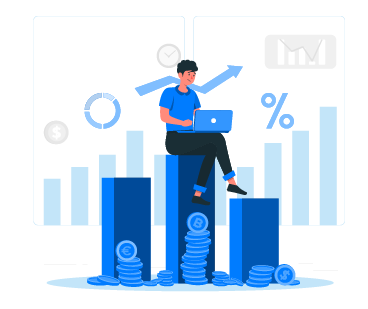
Best Practices of dApps Development;
Security
Security is paramount in dApps development due to the irreversible nature of blockchain transactions. Here are some best practices:
- Code Audits: Regularly audit smart contracts using third-party services to identify and fix vulnerabilities. Companies like ConsenSys Diligence and CertiK offer professional auditing services.
- Use Established Libraries: Leverage well-tested libraries like OpenZeppelin to minimize the risk of introducing bugs.
- Test Thoroughly: Conduct comprehensive testing, including unit tests, integration tests, and security tests. Use tools like MythX and Slither for automated security analysis.
- Follow Best Practices: Adhere to best practices in Solidity development, such as avoiding floating-point arithmetic, using safe math libraries, and implementing proper access controls.
Scalability
Scalability is a critical consideration for ensuring that your dApps can handle increased user activity. Here are some strategies:
- Layer 2 Solutions: Utilize layer 2 solutions like Polygon, Optimism, and Arbitrum to offload transactions from the main chain, reducing congestion and costs.
- Sharding: Sharding involves partitioning the blockchain into smaller, manageable pieces (shards) to improve throughput. Platforms like Polkadot and Ethereum 2.0 implement sharding.
- Optimized Contract Design: Write efficient smart contracts to minimize gas costs and improve performance. Avoid complex computations and storage operations within contracts.
User Experience
A seamless user experience is crucial for the adoption of your dApps. Consider the following tips:
- Intuitive Interface: Design a user-friendly interface that is easy to navigate. Use familiar UI/UX patterns to reduce the learning curve.
- Onboarding: Simplify the onboarding process for new users, including wallet setup and initial transactions. Provide clear instructions and support.
- Performance: Optimize the performance of your dApps to ensure fast load times and smooth interactions. Use caching and other optimization techniques.
- Feedback and Support: Offer in-app support and feedback mechanisms to assist users and gather insights for better customer support.
Security Testing Tools for Dapp Development
To ensure the security of your dApps, incorporating security testing tools into your workflow is essential:
1. MythX
MythX is a comprehensive security analysis platform for Ethereum smart contracts. It integrates with various development tools to provide continuous security analysis throughout the development lifecycle.
Features:
- Deep static analysis
- Dynamic analysis
- Fuzzing
- Detailed vulnerability reports
- Integration with IDEs and CI/CD pipelines
2. Slither
Slither is an open-source static analysis tool developed by Trail of Bits. It analyzes Solidity smart contracts for vulnerabilities and provides insights into potential security issues.
Features:
- Fast static analysis
- Detection of common vulnerabilities (reentrancy, uninitialized storage, etc.)
- Human-readable reports
- Integration with Truffle and other development frameworks
3. Echidna
Echidna is a smart contract fuzzer that helps identify security issues by generating random inputs and testing the contract under various conditions.
Features:
- Property-based testing
-
Related Blog
Java Developer
Working hours: 08h30 – 12h & 13h – 17h30, Mon – Fri Expected starting date: 02/02/2026 I. Key responsibilities Directly work
Senior Frontend Developer
Working hours: 08h30 – 12h & 13h – 17h30, Mon – Fri Expected starting date: As soon as possible (Asap) I.
Senior Fullstack Developer (React/Vuejs, Nodejs,
Working hours: 08h30 – 12h & 13h – 17h30, Mon – Fri Expected starting date: As soon as possible (Asap) I.
Senior Fullstack Developer (React, Nodejs)
Working hours: 08h30 – 12h & 13h – 17h30, Mon – Fri Expected starting date: As soon as possible (Asap) I.
Why Every Pickleball Player Needs
Why Every Pickleball Player Needs Scheduling App in 2026 If you’ve been anywhere near a sports court in the past


